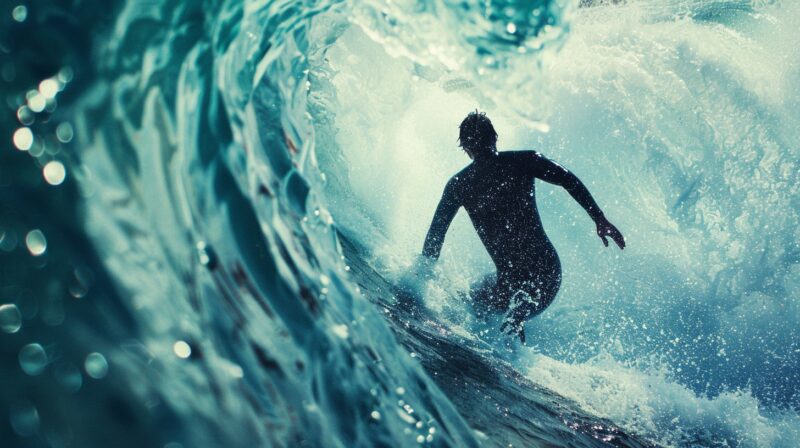The right undergarments worn under a wetsuit can significantly impact your comfort and performance in the water. Your base layer affects warmth, mobility, and protection from chafing – key factors for any water sport.
This guide provides a comprehensive look at the best options, from minimal swimsuits for warm conditions to thermal layers for colder environments. With the right gear, you can enhance your water experience and focus on enjoyment rather than discomfort.
Swimsuits: Minimal and Practical
Benefits of Swimsuits:
- Provides minimal friction and chafing
- Dries quickly and is easy to manage
- Suitable for a wide range of water conditions
Rash Guards: Protection and Comfort

Rash guards are a popular choice for wearing under wetsuits due to their protective properties and comfort. These lightweight, quick-drying shirts are made from spandex and nylon, providing a barrier that prevents skin irritation caused by the wetsuit.
Rash guards also help in sliding into the wetsuit more easily and offer UV protection when you’re out of the water. Their snug fit reduces the risk of chafing and increases overall comfort, making them a favorite among surfers and swimmers.
Why Choose Rash Guards?
- Offers extra protection against chafing
- Helps with wetsuit entry and removal
- Provides some level of UV protection
Quick-Dry Compression Gear: Versatile and Effective
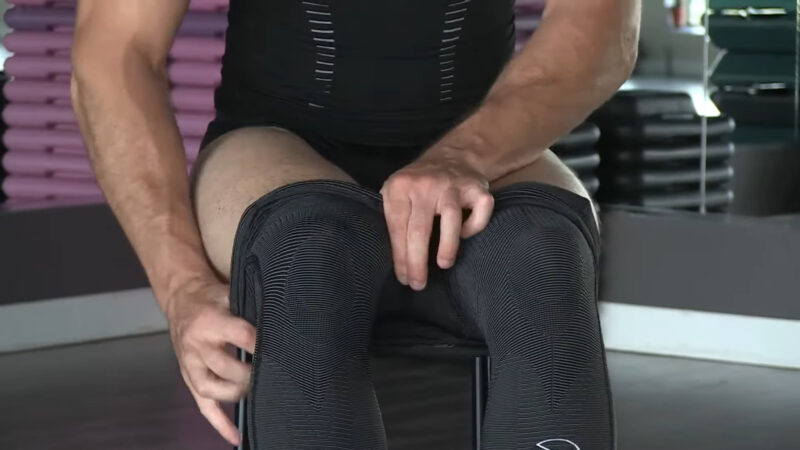
Quick-dry compression water sports gear is an excellent choice for those seeking both comfort and functionality under a wetsuit. Made from materials like polyester or spandex, these garments wick moisture away from the skin and dry rapidly, keeping you warm and comfortable.
They provide muscle support, which can reduce fatigue during extended periods of activity, and fit snugly to prevent bunching or discomfort. Compression gear is versatile and can be used for a variety of sports, making it a practical option for many water enthusiasts.
Benefits of Compression Gear:
- Wicks moisture and dries quickly
- Provides muscle support and reduces fatigue
- Snug fit prevents bunching and chafing
Thermal Wear: Essential for Cold Waters
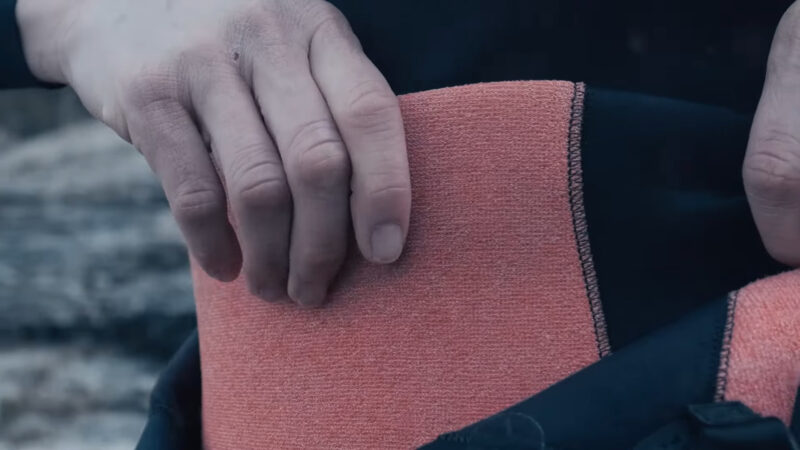
For those diving or engaging in water sports in colder environments, thermal wear is essential. These garments, such as thin neoprene shirts or thermal rash guards, are designed to retain body heat and keep you warm. They provide an extra layer of insulation that is critical for maintaining body temperature in cold water.
Thermal wear is less bulky than traditional layering methods, allowing for better movement and comfort. It is particularly beneficial for deep-sea divers and those who are sensitive to cold conditions.
When to Use Thermal Wear?
- Ideal for cold water environments
- Provides additional warmth and insulation
- Comfortable and less bulky compared to traditional layers
Neoprene Tops and Shorts: Extra Warmth and Protection
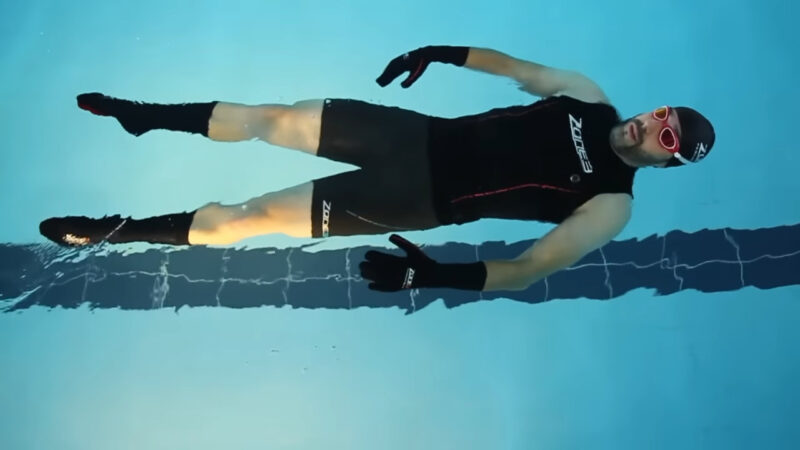
Neoprene tops and shorts offer an extra layer of thermal protection, making them a great choice for colder water activities. These garments are made from the same material as wetsuits, providing insulation and reducing chafing. Neoprene is flexible and helps retain body heat, ensuring you stay warm and comfortable.
The snug fit of neoprene tops and shorts also adds buoyancy, which can be helpful for staying afloat during water activities. They are particularly useful for those who spend a lot of time in the water and need additional warmth.
Benefits of Neoprene Gear:
- Provides extra thermal protection and warmth
- Reduces chafing from the wetsuit
- Adds buoyancy, aiding in flotation
Why is Neoprene So Expensive?
Neoprene’s high cost is due to:
- Complex Manufacturing: Producing Neoprene involves advanced chemical processes, making it more resource-intensive compared to other fabrics.
- Unique Properties: It offers high elasticity, water resistance, and excellent insulation, making it ideal for specialized applications.
- Brand Premium: DuPont, a reputable brand, produces high-quality Neoprene, which commands a premium price.
- High Demand: Its use in high-performance gear like wetsuits and industrial equipment increases its market value.
- Environmental Regulations: Neoprene’s production has environmental impacts, leading to higher costs for cleaner manufacturing processes.
- Lack of Alternatives: Few materials match Neoprene’s combination of properties, maintaining its high price.
Cost of Neoprene
- Raw Material: $5 to $10 per kilogram for bulk form.
- Processed Sheets: $20 to $30 per square meter for standard thickness.
- Branded Neoprene: Can exceed $50 per square meter for high-quality versions.
- Finished Products: Varies widely; wetsuits range from $100 to several hundred dollars.
Tips for Maximum Comfort
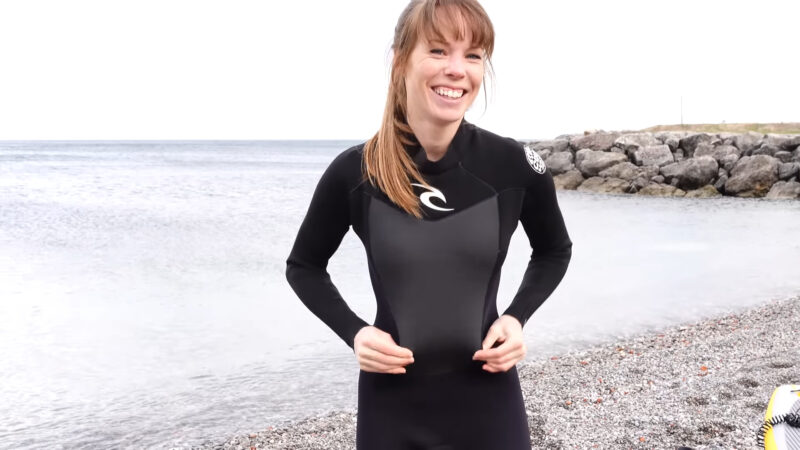
To ensure maximum comfort under your wetsuit, avoid wearing bulky clothing that can cause discomfort and restrict movement. Stick to thin, form-fitting garments that won’t bunch up and ensure that seams in your undergarments do not align with the seams of your wetsuit to prevent chafing.
Choose quick-drying fabrics like lycra or spandex, which minimize the time spent in wet, cold clothing. Additionally, avoid garments with metal accents or thick seams, as these can press into your skin and cause discomfort or even injury.
- Avoid bulky clothing to prevent discomfort and restriction
- Ensure seams do not align with wetsuit seams to reduce chafing
- Opt for quick-drying, snug-fitting materials to maintain warmth and comfort
Conclusion
Choosing the right undergarments is crucial for wetsuit comfort and performance. Just like it’s important to maintain it, like washing it for better durability. As a surfer, I’ve found that a well-fitted rash guard and thermal neoprene shorts work best for our cold-water breaks.
The rash guard’s snug fit and moisture-wicking fabric prevents chafing, while the neoprene shorts provide crucial insulation. This layering system allows me to focus on the waves, not discomfort.
Your perfect formula may differ based on your activity, water temperature, and preferences. Experiment to find the layering that lets you fully immerse yourself in the water, rather than cutting sessions short. With the right undergarments, you can stop worrying about your gear and simply enjoy the experience.

